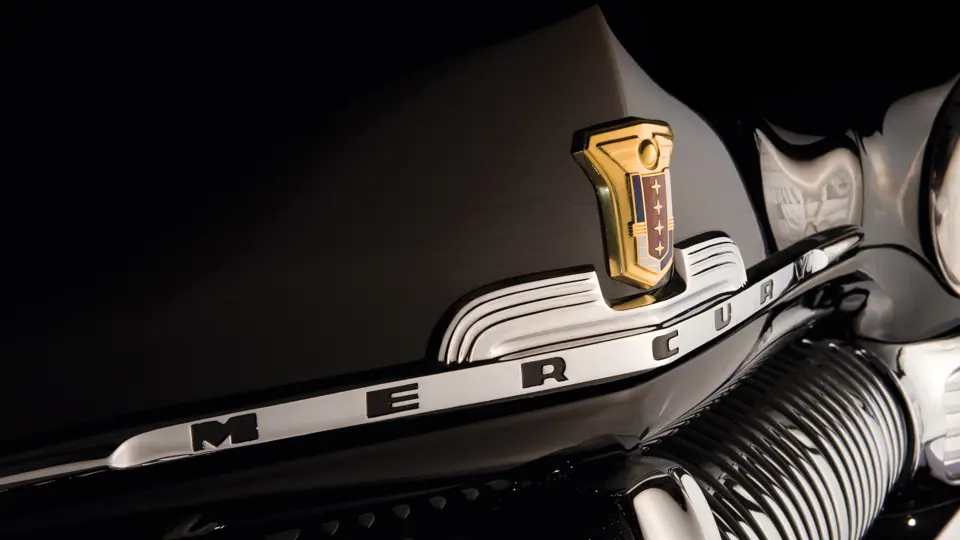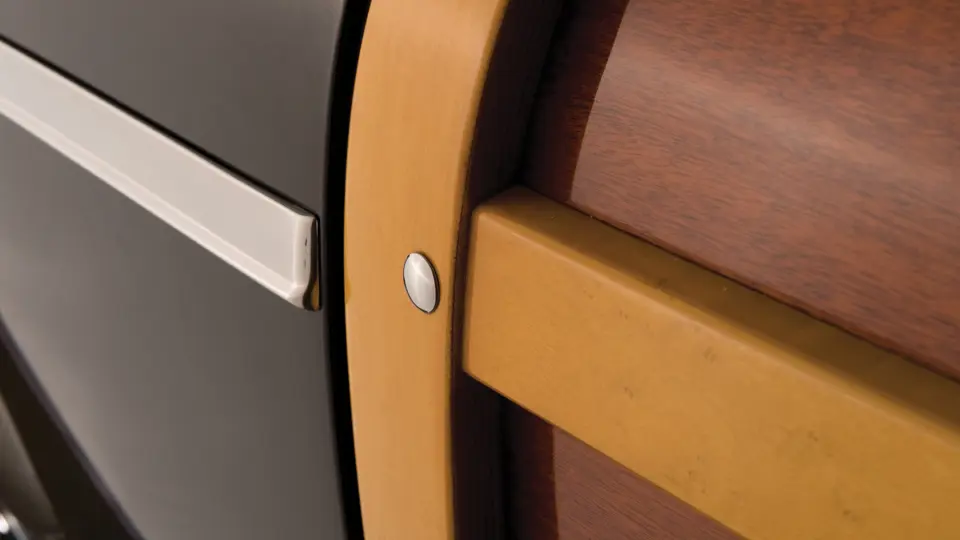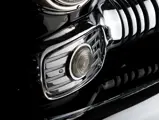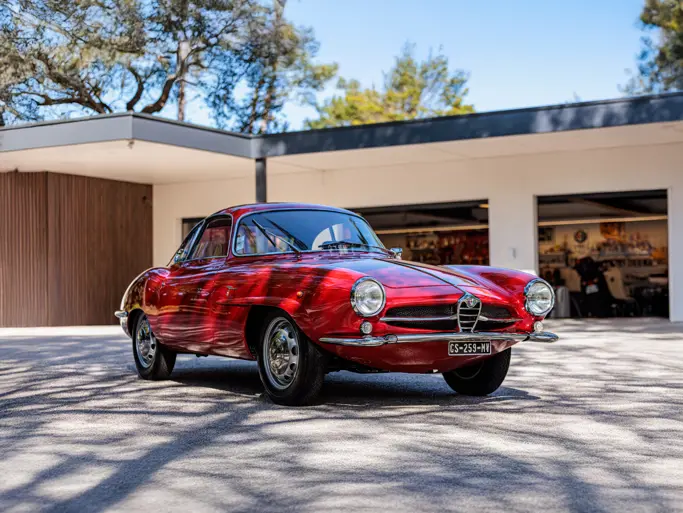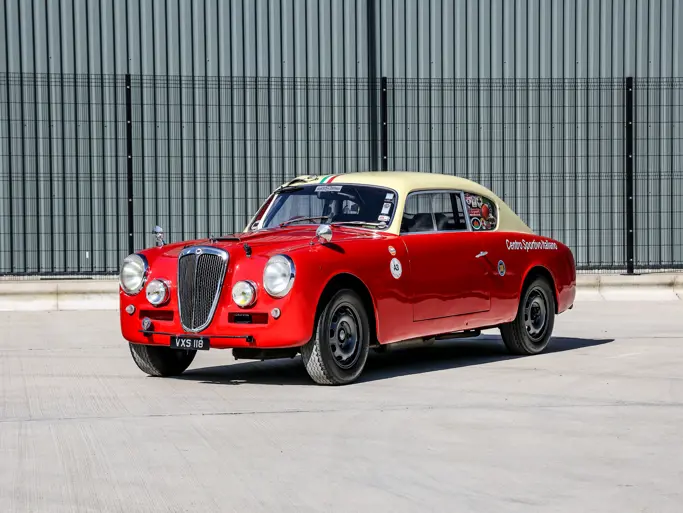MODEL 0CM. 110 bhp, 255.4 cu. in. L-head V-8 engine, three-speed manual transmission with overdrive, coil spring independent front suspension, live rear axle with semi-elliptic leaf springs, and four-wheel hydraulic drum brakes. Wheelbase: 118"
For 1950, Mercury made incremental improvements similar to those in the Ford line. There were now pushbutton door handles, new parking lights, and subtle changes to the grille and hood trim. A completely new instrument panel, called “Safe-T-Vue,” grouped gauges more closely together and raised them closer to eye level. Indirect lighting, a Ford feature in 1949, reduced glare. A new “Merco-Therm” heating and ventilating system promised “living room comfort” and “a complete change of air…in a matter of seconds.”
As in 1949, the station wagon had a full-leather interior available in tan, red, or green and keyed to the car’s exterior color. Seating was provided for eight, in three-two-three configuration, since the second seat was narrow to allow passage to the rear. The load area comprised 118 cubic feet with a nine-foot deck. Company publicity said it could carry up to half a ton, although using it required removing the two rear seats, not an easy job since they were heavy and cumbersome. To accommodate the additional weight, station wagon chassis were stronger than the rest of the passenger line. A wider rear axle was also used, along with heavier, nine-leaf springs. As a result, the empty station wagon was 285 pounds heavier than the four-door sedan.
Like Ford, Mercury had two series of station wagons in 1950. The first series, of which this is a prime example, retained the wood tailgate of 1949. In June, this was superseded by an all-steel gate stamped with faux panel indentations. The folding second seat was also adopted at this time, and the exterior mahogany panels were replaced with DI-NOC grained steel.
While most 1950 Mercurys had a painted dashboard, the station wagon complemented its wood exterior with a wood grain panel. This theme extended to the door panels, which had matching grain. In the back, the side glass slid both forward and aft, giving a flexible ventilation pattern for both middle and rear seats. The tailgate was counterbalanced to compensate for the weight of the spare tire mounted on the outside.
Formerly in the famed Nick Alexander woodie collection, this ’50 Mercury Station Wagon received a Dearborn Award from the Early Ford V-8 Club at Keystone, Colorado, in 2005. Following Mr. Dingman’s purchase of the car, it was consigned to Kevin Westmoreland’s Performance Restoration in Georgia for a complete and thorough rebuild, which was just completed, bringing the car to show quality at a cost of approximately $124,000. The restoration was completed so recently, in fact, that the accompanying photographs on these pages depict the car prior to restoration, during which whitewall tires were added. In addition to complete disassembly, refurbishment and refinishing, and replacement, the restoration process also involved replacement of the exterior panels with new mahogany.
Fresh from restoration, this car is as new. The black paint is flawless, as is the brightwork and brown leather upholstery. The engine is newly painted in correct green, and the compartment is correctly detailed, while the chassis and underbody are painted black. Accessories include radio, heater, overdrive, and factory directional signals. Everything was gone through mechanically as well, down to the overdrive transmission, which was fully rebuilt.
Buoyed by the new design and an extended model year, Mercury station wagon production peaked in 1949, passing 8,000 units, a record for the marque. Nineteen-fifty’s sales, by comparison, only amounted to 1,746 examples, rendering this station wagon very rare indeed. This car is not only one of the few; it is one of the best.





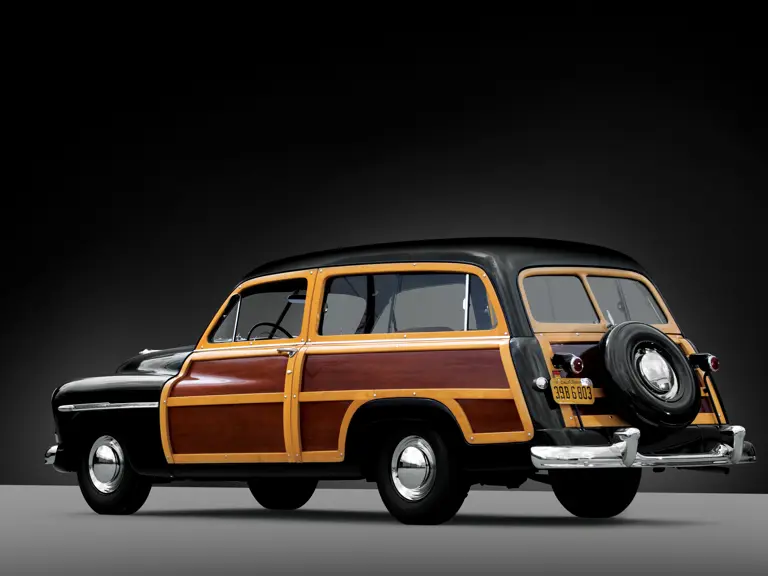

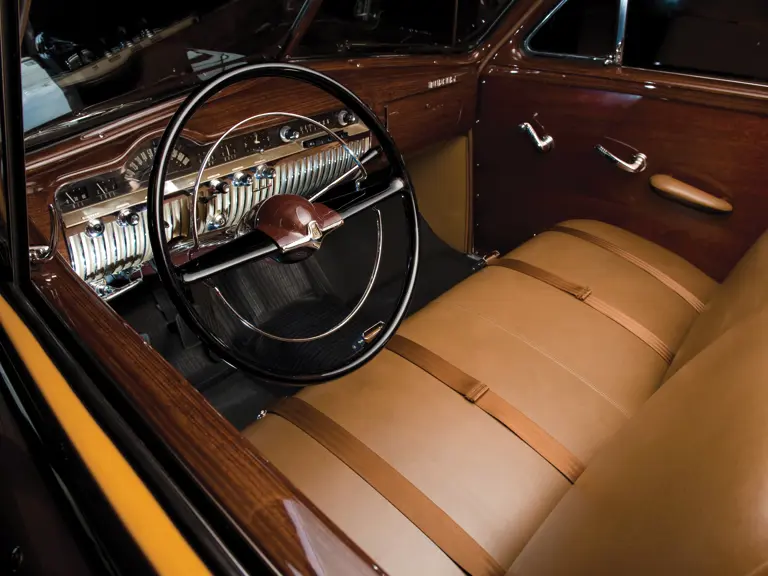
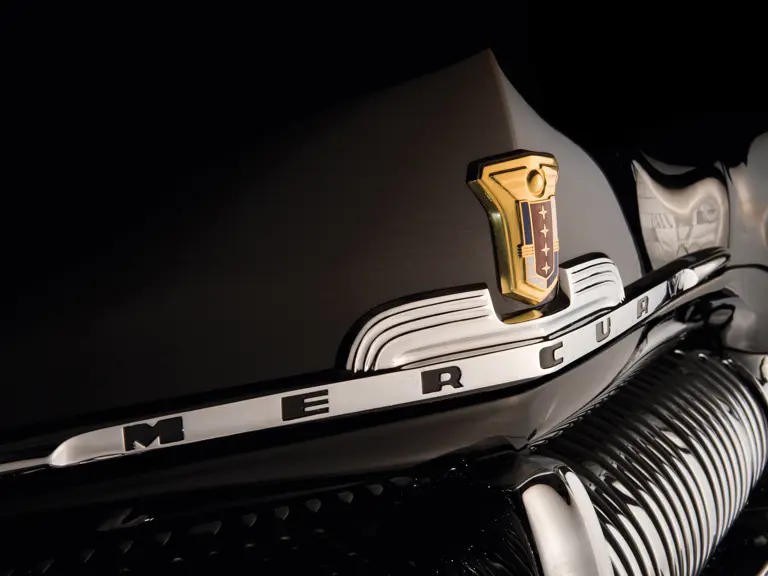
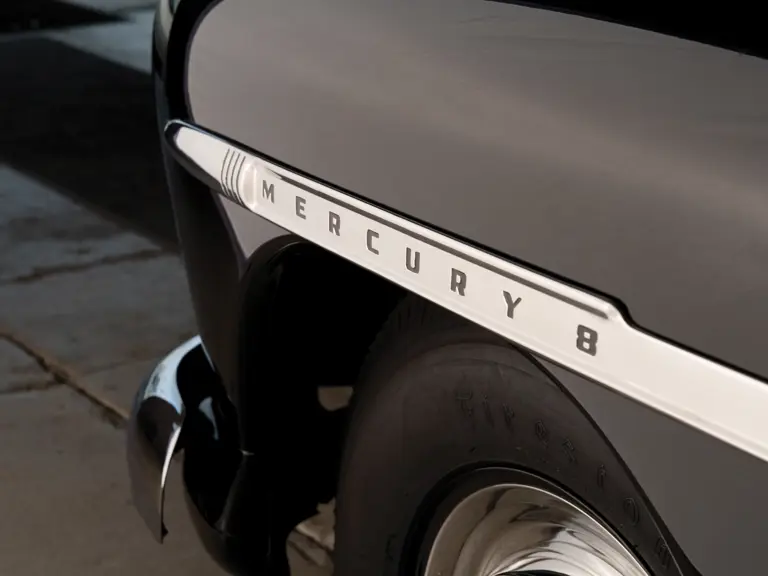
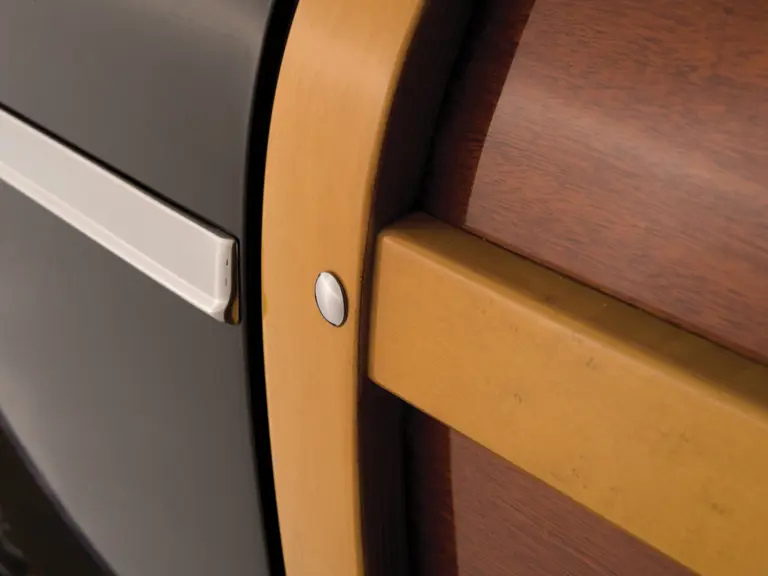
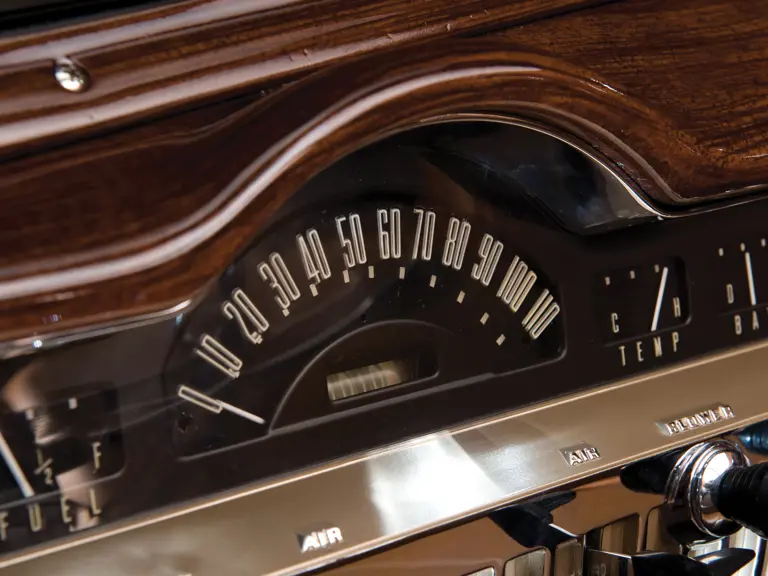
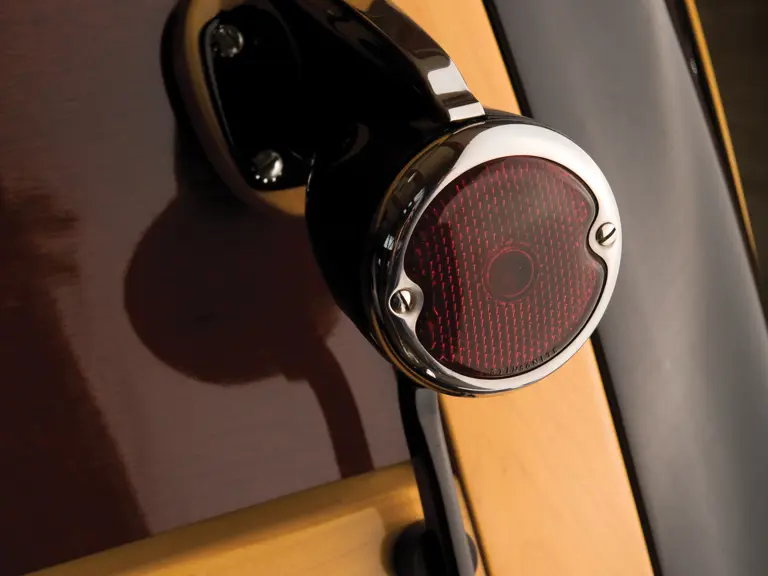
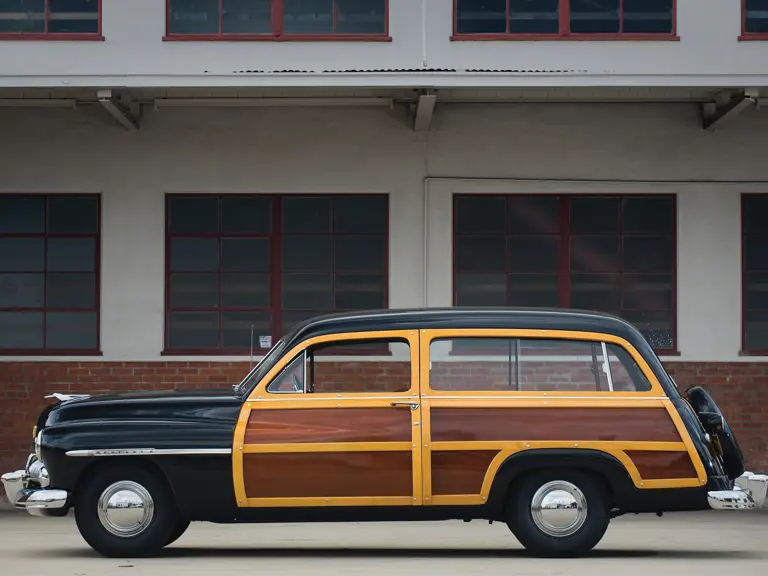
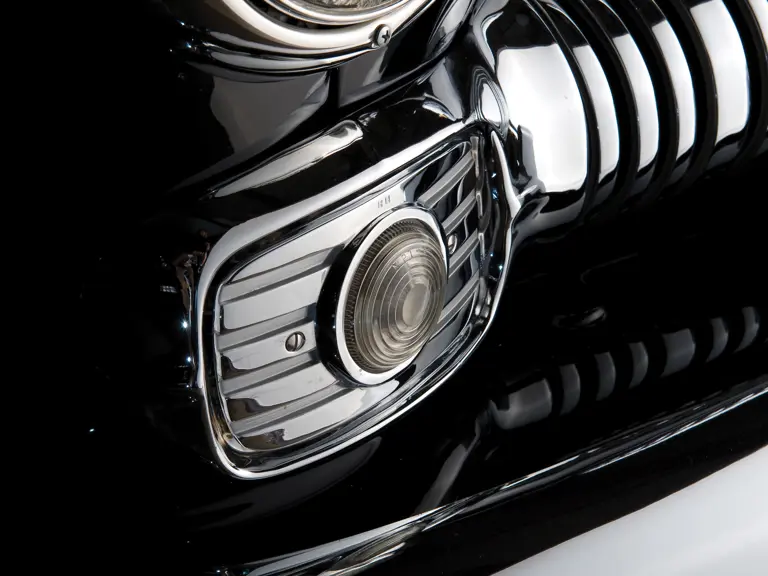
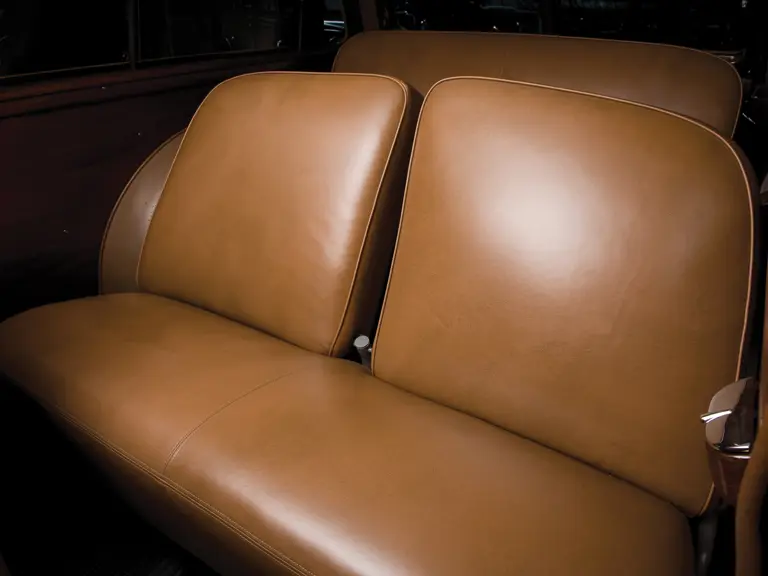
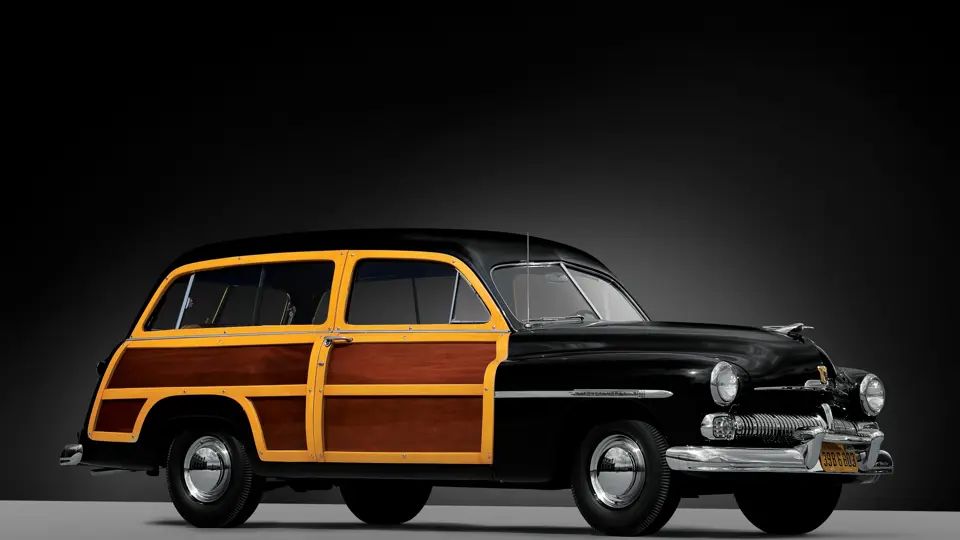
 | Hampton, New Hampshire
| Hampton, New Hampshire
